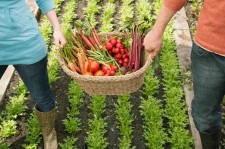
The world has a great challenge on its hands: feeding a growing population with limited farmlands. Global Information Infrastructure Commissioner Howard Janzen urges forethought and action to network farms with advanced technologies that will increase yields.
San Francisco, CA, December 21, 2016 (Newswire.com) - According to the UN, the global population is expected to increase by 38%, from 6.9 billion in 2010 to 9.7 billion in 2050, and 90% of the growth will occur in developing nations. Further, the UN’s Food and Agriculture Organization (FAO) projects that global agricultural production will need to increase by over 50% from its current level to meet this demand and that also by 2050, over 3 billion ton of cereal grains will be consumed globally per annum, an increase of 45%.
At the same time, there is projected to be little or no increase in arable land, meaning the existing farmland will have to produce the food to feed all these additional people. This certainly is not a new problem. David F. Houston, the United States Secretary of Agriculture from 1913 to 1920 stated, “It is obvious that the greatest and most important service that is required of our agriculture under existing conditions is an enlarged production of the staple food crops.”
To make informed decisions on what measures to apply, the farmer needs both historic and real-time data.
Howard E. Janzen, Commissioner & Executive Chairman
At the same time that we’ll be putting this extra demand on our existing farmlands, the land is threatened by a number of factors. The UN reports that the soil itself has degraded in many regions due to synthetic fertilizers, industrial chemicals, and other farming practices that can harm the ecology. Changing weather patterns and water shortages also threaten current farming production, so even as we anticipate the need for current farm land to produce significantly more food, we find it at risk to even continue to produce at current levels.
Caught in the middle of all this is the farmer. Public demands for non-GMO (Genetically Modified Organisms) food, use of non-synthetic fertilizers, and higher quality food may conflict with the farmer’s ability to produce more food and still make a profit, while government regulations on ecological issues might add further restrictions on farmers. On top of this, the very nature of farming forces farmers to be conservative in their operation, often making them reluctant to try new methods for fear that a mistake can put them out of business.
As bleak a picture as this paints, there are efforts under way to address these issues. Improving the health of the soil through tools such as the use of engineered biocarbon (fixed carbon produced by pyrolysis), is one place to start and is beginning to receive a great deal of attention. The engineered biocarbon helps to make water and nutrients available at the root level, where the plants need it, while promoting microbial life in the soil. Once thought to be the “enemy” of farmers, soil microbes are essential for healthy soil, and actually enable plants to better use the soils nutrients and water. By providing a habitat for beneficial microbes to thrive, engineered biocarbon can help to increase crop productivity.
A second area that holds promise is referred to as precision agriculture. Using data from previous harvests, a planter can put more or less seed in a certain area of the field, and perhaps even sow different hybrid seed. Other precision agriculture measures, such as targeting certain areas of a field with specific fertilizers based on individual needs, irrigating select areas based on real-time assessment, and applying treatments for problems identified early in the growing cycle can produce increased yields while at the same time reducing farming cost.
There’s no need to fertilize an entire field if only certain areas need it, and the same applies to irrigation. To make informed decisions on what measures to apply, the farmer needs both historic and real-time data. Gathering data on yields can be accomplished through harvesting equipment sensors and GPS tools that allow data to be associated with discrete areas of the field. Analyzing this data can help farmers pinpoint which areas of the field need attention, and combining this historic data with real-time data gathered from sensors, drones, or satellite makes it that much more effective.
Implementation of these data gathering and analysis approaches to improving agricultural output is predicated on the availability of the infrastructure. Unfortunately, the very nature of farming, with its vast open areas and often remote locations, have, to date, generally prevented the widespread deployment of communication and broadband technology. Without access to this technology, farming will be locked in the past, and we will face the real possibility of not being able to feed all the people of the world. We cannot let that happen.
An old adage says, “Farmers, more than anyone else, know the meaning of hope and patience – waiting months for a crop with the hope that it will amount to something.” We can’t feed the world population on hope, nor can we wait months to see what happens to the crops. We need to enable farmers with new soil health products like engineered biocarbon, and the technology to monitor crops daily, make appropriate adjustments, and deliver increased yields on existing farmland. Rather than simply hoping for good crops, the farmer, using technology, will provide hope for the billions of people needing food.
Source: Global Information Infrastructure Commission
Share:
